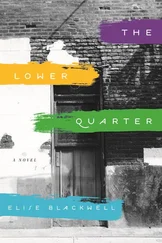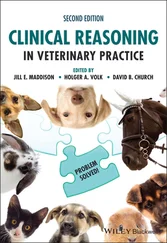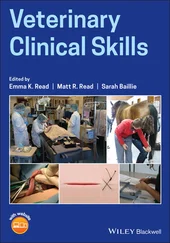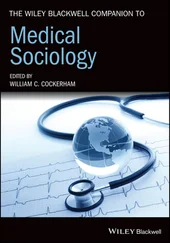1 ...6 7 8 10 11 12 ...22
 THERAPEUTICS
THERAPEUTICS
See individual toxicant topics.
There are relatively few toxicants most likely to poison horses for which specific antidotes exist.
In most suspected intoxications, the best approach to decontamination is administration of an adsorbent such as activated charcoal (AC):Early and appropriate decontamination and vigorous symptomatic and supportive care often result in recovery.Always observe appropriate precautions during decontamination procedures to avoid self‐exposure or exposure of others to the toxicant.Often, mineral oil is given after suspected exposure to a toxicant. This practice should be discouraged because there is no evidence that mineral oil is an effective adsorbent for most toxicants. Mineral oil should not be administered with AC because of a possible diminution of the adsorptive capacity of the administered AC.
If the specific toxicant is known, make sure to verify what additional treatment options (antidotes) are available.
Keep in mind that multiple toxicants might be involved particularly in malicious poisonings.
 COMMENTS
COMMENTS
Contact a pathologist at the diagnostic laboratory in your region if you are performing the necropsy. It is preferable to get some of the animals into the diagnostic laboratory for a pathologist to examine, but if this is not possible, then discussing options with a pathologist prior to performing field necropsies is recommended.
If you suspect intoxication, contact a toxicologist prior to sample collection for guidance on appropriate samples to collect and sample storage and submission guidelines.
In the event of a reportable disease, contact the state veterinarian in your region to keep them informed and allow for timely intervention if necessary.
Keep in mind the safety of you and your client, the environment and other animals. Always wear personal protection equipment for your safety.
Carcass disposal can be an important consideration and your state veterinarian or diagnostic laboratory can provide advice.
Keep in mind infectious diseases that can mimic an intoxication. A few examples of possible infectious diseases that might cause multiple deaths in a short time‐frame are anthrax, emerging diseases to which animals are naïve, and rare bacterial and viral diseases. If anthrax is a possible differential (multiple species or large numbers of animals affected; blood from all orifices – but not always), collect an eyeball and submit to the diagnostic laboratory for stain and culture. Opening the carcass will contaminate the soil with spores that will remain infectious for decades.
Specific topics
See Appendix 1 for a complete list.
1 Barr AC, Reagor JC. Toxic plants: what the horse practitioner needs to know. Vet Clin N Am: Equine Practice 2001; 17:529–546.
2 Puschner B, Galey FD. Diagnosis and approach to poisoning in the horse. Vet Clin N Am: Equine Practice 2001; 17:399–409.
3 Davis GJ, McDonough SP. Writing the necropsy report. In: Brooks JW, ed. Veterinary Forensic Pathology, Volume 2. Springer International Publishing, 2018.
4 Murphy LA, Kagan R. Poisoning. In: Brooks JW, ed. Veterinary Forensic Pathology, Volume 2. Springer International Publishing, 2018.
Authors:Katherine D. Watson, DVM, PhD, DACVP; Wilson K. Rumbeiha, DVM, PhD, DABT, DABVT, ATS
Consulting Editor:Robert H. Poppenga, DVM, PhD, DABVT
Chapter 3 Laboratory Testing Considerations
Background Information
The best laboratory testing starts with the collection and handling of the correct sample. Sample collection and handling errors are referred to as “pre‐analytical” errors and some studies estimate that these types of errors account for between 40% and 75% of diagnostic errors.
Drug concentrations in various body fluids are a snapshot in time. Toxicity may precede elevated blood or urine levels.
Searching for an “unknown” compound is time‐, sample‐, and labor‐intensive and will cost accordingly.
There are thousands of toxic agents, but organisms have a limited number of clinical/physiological responses. Providing the laboratory with a description of clinical signs may be helpful in determining the best analytical strategy.
A “tox screen” varies in scope and may include different analytical techniques, but none are 100% encompassing. The most comprehensive screens can identify 95–98% of common toxicants.
A negative screen does not mean a toxicant is not present in the sample. Potential reasons why a toxicant is not identified include:The unknown compound may be present at a level that is too low for the test to detect.The compound was lost during sample preparation.The wrong instrument parameters were used.The compound is not included in the screening panel.
When it is known that the sample contains certain drugs, such as in blood samples collected immediately following the administration of euthanasia drugs, the laboratory should be alerted to the presence of these compounds. When the laboratory uses highly sensitive instrumentation for testing, the euthanasia medications will be present at levels that can overload detectors and contaminate equipment.
Asking the laboratory very specific questions about the scope of testing will improve and speed up results. For example: “Does this screen detect monensin?/metals?/blood doping agents?/pesticides?” etc.
Common Terms and Definitions
Detection limits. The lowest level at which a test can reliably detect the analyte. The more sensitive the test, the lower the detection limit. For drug concentrations, general units range from picograms per milliliter (pg/mL; most sensitive) to micrograms per milliliter (μg/mL; least sensitive).
Drug. A substance that has a physiological effect when introduced into the organism.
ELISA (enzyme linked immunosorbent assay). The assay uses an enzyme linked to either antibody or antigen. When the analyte is present, the coupled enzyme reacts with a substrate, causing a color change.
FID (flame ionization detector). Can be coupled to gas chromatographs for separation of analytes. Toxicology applications include ethanol testing.
Forensic testing. Test results may be used in a legal setting and any sample collected for this purpose will require special handling to document the chain of custody of the sample. Data to support a test result must be scientifically and legally defensible.
GC (gas chromatography). A separation technique that can separate components of a mixture for detection and/or quantification. The sample must be able to be volatilized and is generally restricted to lower‐molecular‐weight compounds (less than 500–600 amu).
ECD (electron capture detector). Used to detect halogenated compounds, i.e., compounds containing bromine, chlorine, fluorine, or iodine. Can be coupled to gas chromatographs for separation of analytes. Toxicology applications include pesticide analysis in body fluids.
GC‐MS (gas chromatography–mass spectrometry). A technique used for the separation, detection, and confirmation of volatile, non‐polar, and lower‐molecular‐weight (< 500–600 amu) compounds within a test sample. It is generally not suitable for analysis of larger molecules, such as peptides, proteins, or metals. It is considered a “gold standard” test for positive identification when the right parameters are used. Crucial parameters for successful performance include the ability of the target molecule to be volatilized, choosing the correct extraction, temperature range for separation, column chemistry, carrier gas, and ionization mode. If the identity of the target molecule is not known, the test can yield a false negative. Toxicology applications are numerous in the field of small molecule drug analysis.
Читать дальше
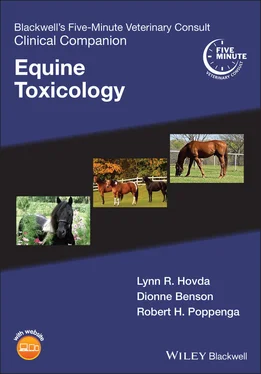
 THERAPEUTICS
THERAPEUTICS COMMENTS
COMMENTS